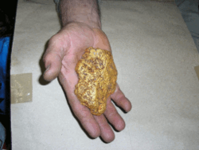DTL,
The key word in your question is 'sight'. I've been shooting with english for many many years & my dominant eye is always over my stick. However I am still 'sighting' the contact line.
{QUOTE=CJ} I'm curious, how do you know your "dominant eye" is "always" over your stick? Do you mean in a line with, higher than, or something else?
I presume you have a camera that you use to check this every day.
CJ,
My bad. Just as we should 'never' say 'never', we should never say 'always' either. I guess I should have said that I
'always' intend to get my right 'dominant' eye over my cue. Or, would it be better to say that I intend to get my cue
under my right dominant eye?
I had an eye injury many years ago & I started missing some rather easy shots & discoverd that my cue had drifted to the center under my nose. I did not understand why at the time, but made a conscious effort to make sure that my right, dominant eye was over the cue. Those ocassional easy misses still poped up. So when I covered my left eye the vision in my right 'dominant' eye was blurrry.
So... I am fairly sure that I now keep my right dominant eye
over my cue, but to say that I 'always' get it there perfectly would be an assumption on my part as I do not use a camera to check it on every or in fact any shots that I shoot. However I do close my left eye at times for different reasons & it seems that my right dominant eye has 'always' been over my cue & it is aimed as I intend, or at least it appears to be so.
I'm interested to '
hear' your point.
Best Regards to You &



